Sustainable Fashion Reselling: Your Next Eco-Friendly Side Hustle
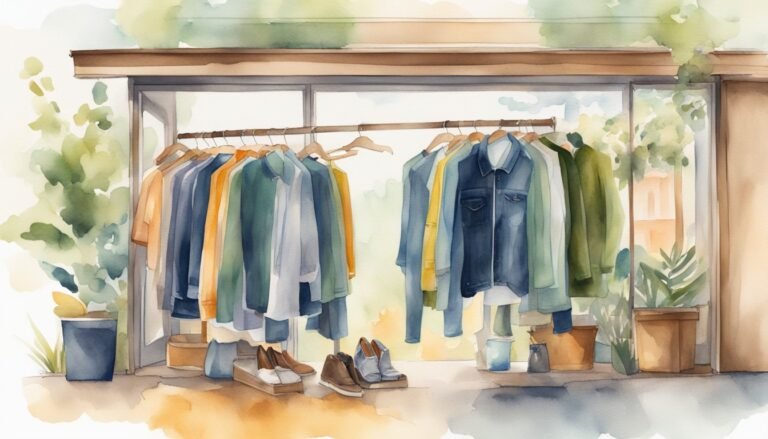
Sustainable fashion reselling is an exciting and meaningful side hustle that’s transforming the fashion industry.
As more people become aware of the environmental impacts of their clothing choices, secondhand fashion is gaining popularity.
This shift isn’t just a trend—it’s a growing movement towards a more sustainable future.
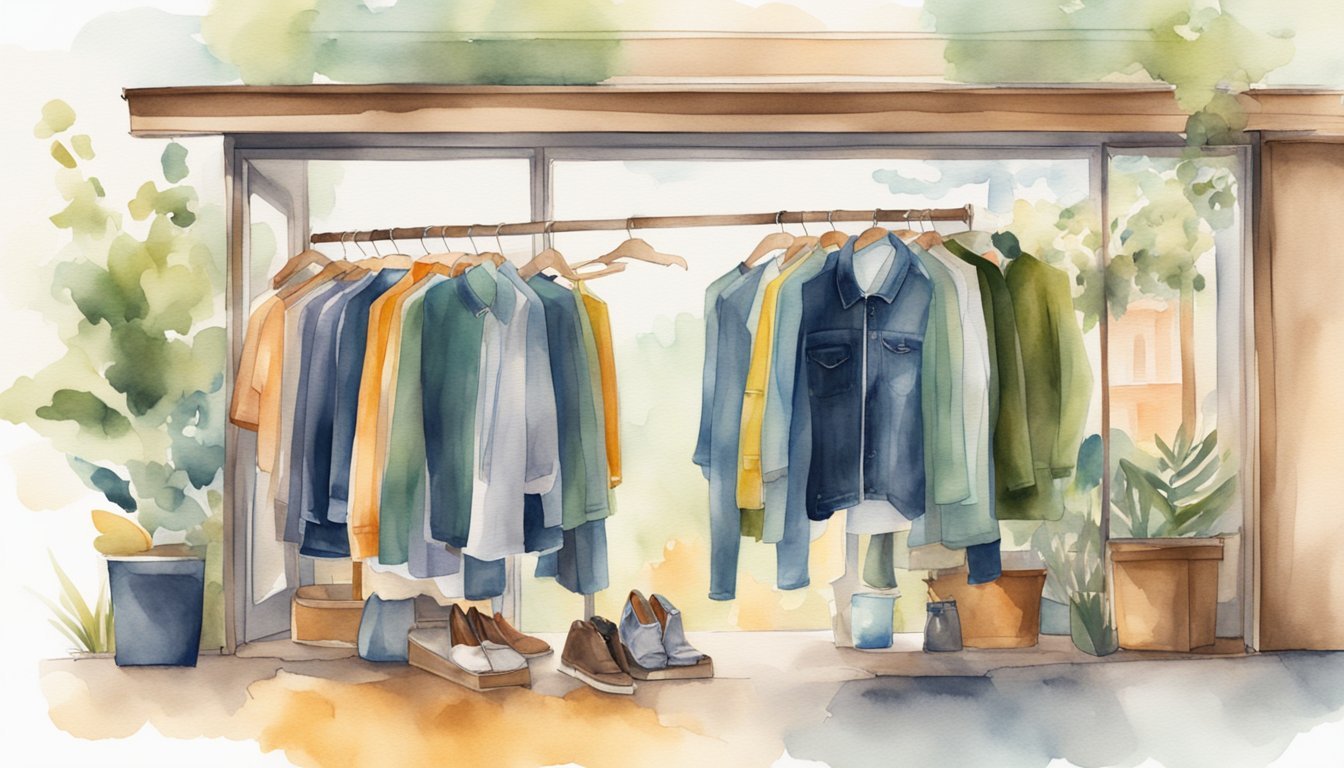
By participating in fashion reselling, you can help reduce waste, save money, and score unique, high-quality pieces.
Platforms like The RealReal and Vestiaire Collective are leading the way, making it easier for consumers to buy and sell pre-loved designer items.
Whether you’re a buyer or a seller, you’re contributing to a circular economy that values reuse and sustainability.
Engaging in this side hustle offers you the chance to support sustainable brands and retailers, connect with a community of like-minded individuals, and make a positive impact.
It’s not only about making extra income but also about promoting a mindful approach to fashion consumption.
Key Takeaways
- Sustainable fashion reselling is a growing side hustle.
- Reselling can reduce waste and support a circular economy.
- Platforms make it easy to buy and sell pre-loved items.
The Emergence of Sustainable Fashion
Sustainable fashion is becoming key in redefining how clothes are made, sold, and reused.
This movement isn’t just about new clothes but also focuses on reselling and repurposing existing garments to create a more circular economy.
Defining Sustainable Fashion
Sustainable fashion focuses on creating clothes that are environmentally friendly.
This includes using eco-friendly materials, reducing waste, and ensuring fair labor practices.
Sustainability in fashion also involves minimizing the carbon footprint throughout the garment’s lifecycle, from production to disposal.
Key Elements:
- Eco-friendly materials: Organic cotton, recycled fabrics
- Reduced Waste: Zero-waste design techniques
- Fair Labor: Ethical production standards
By embracing these practices, brands can help support a circular fashion industry, where clothes are recycled and resold rather than thrown away.
Historical Context and Evolution
The idea of sustainable fashion isn’t new, but it’s gained momentum in recent years. Historically, fashion was more sustainable out of necessity.
People would remake and reuse clothes out of limited resources.
In the past few decades, increased awareness of environmental issues has pushed fashion to evolve.
Brands like Patagonia and Eileen Fisher pioneered the idea by promoting recycled materials and take-back programs.
Now, many new designers and large companies are adopting these methods.
The growth of platforms like The RealReal and Vestiaire Collective shows how popular reselling has become.
This trend aligns with circular economy principles, ensuring that fashion stays sustainable without sacrificing style.
Understanding the Resale Market
The fashion resale market has seen a boom, providing side hustlers and conscious consumers with a chance to engage in sustainable practices.
This section looks at the growth trends and dynamics driving this industry.
The Growth of Fashion Resale
Fashion resale is exploding, with the global market expected to hit around $64 billion by 2024.
This rapid growth is partly fueled by platforms like The RealReal, ThredUp, and Depop, which make selling and buying secondhand clothes easy and fashionable.
More people are choosing to buy secondhand to save money and support sustainable fashion.
As a result, these platforms have seen a surge in users.
This trend indicates that fashion resale is not just a fad but a growing market with significant revenue potential for side hustlers and savvy shoppers alike.
Secondhand Market Dynamics
In the resale market, understanding the dynamics at play can help you succeed. ThredUp reports that the secondhand apparel market could reach $350 billion by 2027.
This rise is driven by consumers’ changing attitudes toward sustainability and affordability.
Platforms like Poshmark and Depop are popular for selling gently used items.
These platforms offer an easy way to turn your closet clean-out into a profitable side hustle.
Additionally, trends show that younger generations are more inclined to thrift, pushing the market forward.
With these factors, the fashion resale market continues to be a vibrant part of the retail landscape, offering opportunities for those looking to make a difference and earn extra income.
Environmental Impacts of Fashion
Fashion has significant environmental impacts, particularly in terms of carbon emissions and waste.
Addressing these issues can drastically improve sustainability in the fashion industry.
Carbon Footprint of Fashion Industry
The fashion industry is a major contributor to global carbon emissions.
It accounts for about 10% of humanity’s carbon footprint.
Producing and transporting textiles requires massive amounts of energy.
For example, most clothing items travel thousands of miles before reaching stores.
Polyester production, common in fast fashion, is especially harmful because it is derived from petroleum.
This process releases numerous greenhouse gases.
In addition to energy use, fashion impacts the climate through extensive water usage.
It consumes between 20 trillion to 200 trillion liters of water annually.
This enormous consumption contributes further to the environmental burden, making it critical to consider the industry’s carbon footprint when discussing sustainable fashion.
Waste Reduction and Recycling Efforts
Fashion also generates a lot of waste.
Every second, the equivalent of a garbage truck full of clothes is dumped in landfills worldwide.
This makes waste management a key issue.
Efforts are being made to recycle clothes and reduce waste.
For instance, the fashion resale market is expected to grow significantly, with platforms like The RealReal promoting secondhand fashion.
This reduces waste by extending the life of garments.
Additionally, brands are starting to use recycled materials in their products.
These initiatives aim to decrease the amount of textile waste and lessen the need for new raw materials.
By embracing recycling and resale, the fashion industry can mitigate its negative environmental impacts.
Circular Business Models
If you’re exploring sustainable fashion reselling, understanding circular business models is key.
These models focus on minimizing waste through practices like rental, repair, and upcycling, ensuring products have longer lifespans.
Principles of Circularity
Circularity aims to create a sustainable loop for products.
Key principles include reducing waste, reusing materials, and recycling old items.
Instead of a traditional linear model (make, use, dispose), circularity focuses on repair, refurbishment, and upcycling.
For example, a rental model lets you rent clothes instead of buying them, ensuring they are used by many people. Repair services can extend the life of garments, while upcycling transforms old clothes into something new.
Emphasizing these principles helps combat fashion waste and encourages sustainable practices.
Circular Solutions in Fashion Reselling
In the fashion reselling sector, circular business models can be highly effective. Digital platforms like ThredUp and Vestiaire Collective are leading the way.
They use AI and analytics to streamline processes, making it easier for you to buy and sell pre-loved items.
A noteworthy practice is digital tagging, which helps track the lifecycle of an item.
Implementing rental, repair, and refurbishment programs under an umbrella brand, like Selfridges’ Reselfridges, boosts the resell value and supports circularity.
Using these strategies, you can engage in sustainable fashion reselling as a lucrative side hustle.
Not only do you earn money, but you also contribute to an eco-friendly economy by ensuring garments have a longer, more productive life cycle.
Impact of Technology and Innovation

New technologies and innovations are transforming the fashion reselling market into a more sustainable and efficient business.
Let’s explore how AI, AR, and other advancements are driving this change.
AI and AR in Fashion Reselling
Artificial Intelligence (AI) and Augmented Reality (AR) are revolutionizing fashion reselling.
AI helps with accurate product recommendations and predictive analytics, making it easier for you to find what you need.
For instance, AI can analyze buying patterns and suggest items that suit your style.
AR takes virtual try-ons to a new level.
You can see how clothes fit and look on you without stepping into a store.
This reduces the chances of returns and increases customer satisfaction.
Additionally, AR enhances the shopping experience by providing interactive and immersive environments.
Tech Advancements Shaping Sustainability
Technology advancements are vital for improving sustainability in fashion reselling.
Digital IDs and tracking systems enable better traceability in supply chains.
This means you can know exactly where your clothes came from and how they were made.
Blockchain technology ensures transparency and reduces fraudulent items in the market.
Biotechnology is another promising field.
You can find textiles made from bio-waste, which are more environmentally friendly.
These textiles often combine natural fibers with existing fibers, creating sustainable fabrics.
Technology also helps in reducing waste by enabling better recycling and reselling processes.
Consumer Behavior and Demographics
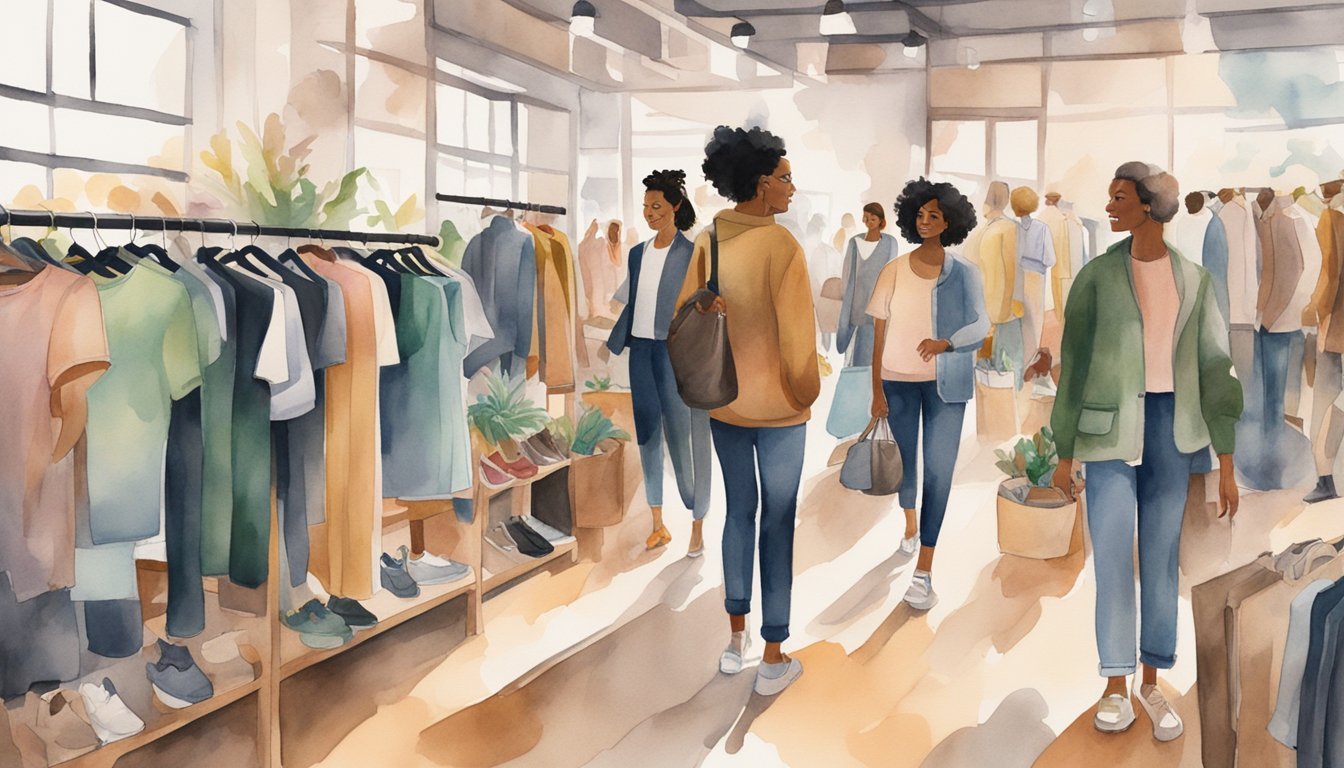
When it comes to sustainable fashion reselling, understanding who is buying and why can help you better tailor your approach.
Let’s dive into how different generations and increased awareness shape consumer habits in this market.
Generational Shifts in Fashion Consumption
Both millennials and Gen Z are major drivers in the sustainable fashion movement.
Millennials, born between 1981 and 1996, often prioritize eco-friendly practices and ethical production.
They grew up with the rise of technology and social media, which gives them access to a wealth of information about fashion’s impact on the environment.
Gen Z, even younger, shows strong preferences for sustainability.
They are not only active on social media but also draw their values from a time when climate change is a critical issue.
You’ll find that Gen Z is more likely to buy second-hand or resell fashion items themselves, making sustainable reselling a popular side hustle.
Both generations are shifting away from fast fashion, recognizing the problems of overproduction and waste.
This shift supports more sustainable practices and opens up opportunities for you to tap into these eco-conscious markets.
The Role of Consumer Awareness
Awareness about sustainability and the dangers of overproduction is growing, influencing consumer behavior significantly.
People are becoming more educated about the environmental footprint of their clothing choices.
You can leverage this increased awareness by highlighting the benefits of reselling, such as reducing waste and conserving resources.
This is a powerful selling point for eco-friendly buyers.
Moreover, consumers who are aware are more inclined to investigate the origins and materials of their clothing.
They seek transparency and often share this information within their networks, amplifying the impact.
As a reseller, offering details about the sustainability of your products can attract informed buyers who prioritize ethical consumption.
Challenges Facing Sustainable Fashion
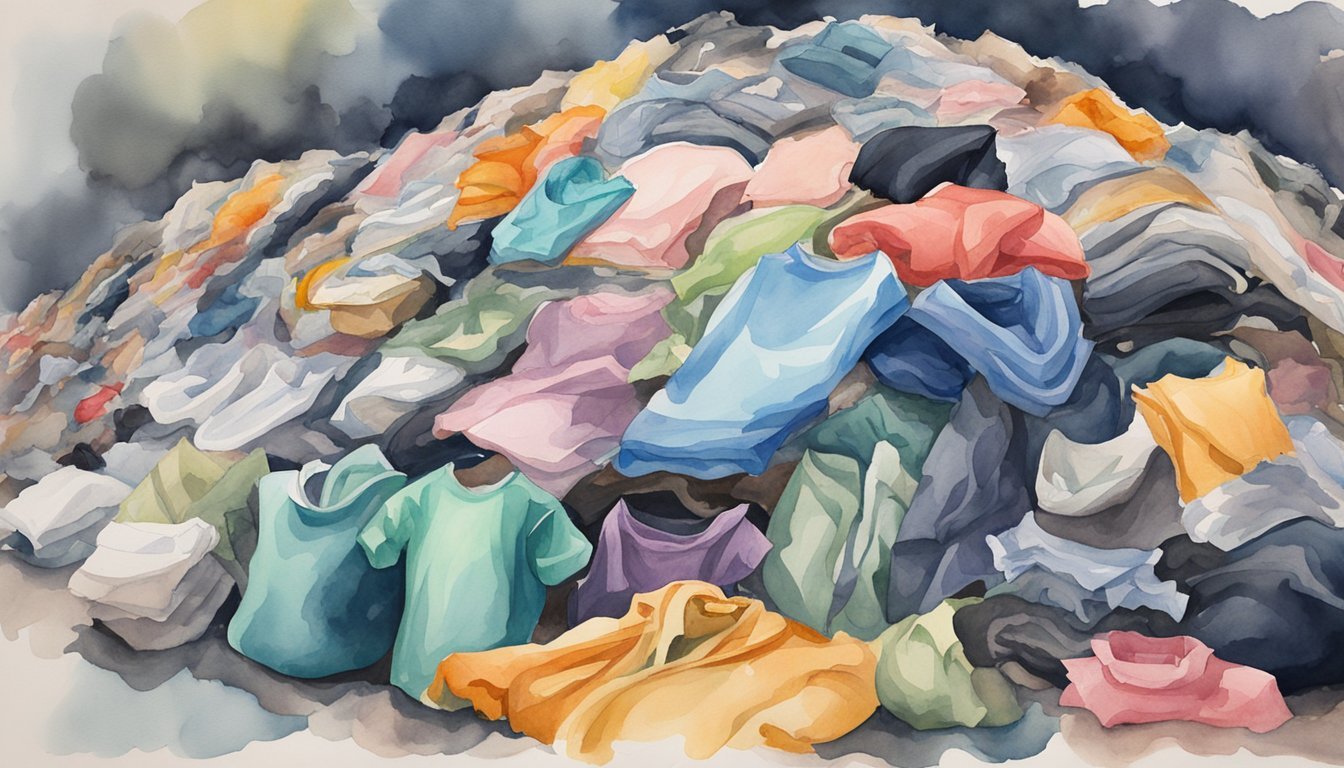
Navigating the world of sustainable fashion presents key challenges, particularly when addressing the impacts of overproduction and fast fashion, as well as the difficulties of balancing profit with the ideals of sustainability.
Addressing Overproduction and Fast Fashion
Overproduction and fast fashion are significant hurdles in sustainable fashion.
High-speed production leads to mass quantities of cheaply made clothing, driving excessive consumption.
This results in large volumes of waste.
You may find overproduced inventory contributes to environmental issues.
Clothing manufacturers often create more items than needed, anticipating consumer demand.
Much of this surplus either ends up unsold or disposed of, adding to landfill waste and the climate crisis.
Another problem is the quick turnover of fashion trends.
With fast fashion, items have a short lifecycle.
Consumers frequently discard old trends in favor of new ones, further exacerbating waste and resource depletion.
Deceleration in fashion cycles could help, but the industry often resists because it thrives on rapid consumption.
Balancing Profit and Sustainability
Balancing the need for profit with sustainability goals is another challenge.
Sustainable practices in fashion, like using eco-friendly materials or ethical labor, often come with higher costs.
Small businesses and individuals interested in reselling sustainable fashion might struggle to maintain profitability due to these expenses.
You might notice that sustainable products are generally priced higher than their fast fashion counterparts.
Higher costs can be a barrier for consumers, limiting the market for sustainable goods.
Some brands are working to find a balance.
They adopt practices such as recycling materials, reducing production waste, and investing in technologies that lower environmental impact.
Yet, achieving a profitable model that also addresses these sustainability issues remains difficult.
Moreover, luxury fashion resale can be a viable solution.
By reselling high-quality items, you not only extend the item’s life but also cater to consumers looking for sustainable yet stylish options.
Finding ways to merge sustainability with business goals requires innovation and dedication.
It involves rethinking production and consumption patterns to create a more sustainable fashion future.
Sustainable Brands and Retailers
Exploring sustainable fashion reselling can be a great side hustle for you.
Many brands and retailers are leading the way in becoming eco-friendly by implementing innovative strategies that you can leverage.
Leading Brands in Sustainable Reselling
Several well-known brands are active in sustainable reselling and provide reliable platforms. Patagonia Worn Wear offers a robust resale program, allowing you to buy and sell used Patagonia products.
This initiative keeps items in circulation longer, reducing waste.
Eileen Fisher is another pioneer, focusing on reselling, recycling, and upcycling their clothing.
Partnering with programs like H&M’s resale site can also be a smart move, as they aim to make fashion more sustainable by allowing customers to sell back old clothes.
Lululemon has a growing resale market as well.
Platforms like The RealReal specialize in luxury brands such as Gucci, Burberry, and Nike, making them excellent sources for reselling high-quality items.
Retail Strategies for Sustainability
Retailers are adopting various strategies to encourage sustainable reselling. Target has launched initiatives to recycle used goods.
You can sell back items for store credit, making it easier for you to contribute to eco-friendly practices.
Madewell supports denim recycling programs, allowing you to bring in old jeans for a discount on new ones.
These strategies not only foster sustainability but also give you financial perks as you declutter.
Zara and H&M have established resale platforms where you can sell pre-loved pieces.
They employ a model where you can earn cash or store credit, which provides flexibility whether you want to shop more or save.
By engaging with these brands and using their platforms creatively, you can turn sustainable fashion reselling into a profitable side hustle.
Collaborations and Partnerships

Collaborations and partnerships play a crucial role in advancing sustainable fashion reselling.
By combining resources and strengths, companies can better address environmental concerns and enhance market reach.
Cross-Industry Partnerships
Cross-industry partnerships are essential to sustainable fashion reselling.
They involve companies from different sectors working together.
For instance, partnerships between fashion brands and tech companies can create smart solutions for tracking and authenticating resold items.
Brands like Stella McCartney often partner with tech firms to innovate sustainable practices.
Another example is Vestiaire Collective, collaborating with various platforms to expand their reach.
**REI](https://www.productsup.com/blog/2024-fashion-resale-market-trends-and-sustainability-in-fashion-resale/) also collaborates with other outdoor brands to promote resale and recycling programs.
These alliances not only boost sustainability but also make reselling a profitable side hustle for you.
Collaborations for Circularity
Circularity in fashion refers to the lifecycle of products, from creation to reuse.
Collaborations aimed at circularity ensure that fashion items are reused, recycled, or repurposed, reducing waste significantly.
The Ellen MacArthur Foundation is a notable advocate, partnering with brands to promote circular economy in fashion.
Such collaborations help in creating guidelines and practices that encourage recycling and repurposing.
Through partnerships, companies like Vestiaire Collective and REI develop programs that incentivize recycling old gear.
They offer benefits such as discounts on new purchases, making it rewarding for you to participate in circular practices.
These collaborative efforts make sustainable fashion reselling effective and accessible, transforming your side hustle into a positive environmental impact.
Encouraging Sustainable Practices
When it comes to making sustainable fashion choices, education and community engagement play key roles.
By learning more about the impact of your fashion choices and joining a community dedicated to sustainability, you can make a big difference.
Additionally, incentives can encourage you to make more sustainable choices, turning reselling and buying secondhand into a rewarding side hustle.
Education and Community Engagement
Understanding the benefits of sustainable fashion starts with education.
Many people are unaware of the environmental impact of fast fashion.
Learning about how clothes are made, the materials used, and the labor involved can change your outlook.
Workshops and Online Resources: Attend local workshops or explore online resources to learn more.
These platforms provide useful information on sustainable materials, ethical manufacturing, and how to spot eco-friendly products.
Community Groups: Joining community groups, both in-person and online, can create a supportive environment.
These groups often share tips, host clothing swaps, and provide a space for you to discuss sustainable practices with others who care about the same issues.
Education and engagement empower you to make better choices and spread awareness, fostering a community culture that values sustainability.
Incentives for Sustainable Choices
Providing incentives can make sustainable practices more appealing.
When you see clear benefits for choosing sustainable fashion, you are more likely to stick with it and possibly even turn it into a side hustle.
Discounts and Rewards: Brands often offer discounts or rewards for customers who resell their clothes or buy secondhand.
These can include loyalty points, special discounts, or even cash back on purchases.
Eco-Friendly Certifications: Look for certifications on clothing that indicate sustainable practices, such as the Global Organic Textile Standard (GOTS) or Fair Trade certifications.
Knowing that your purchase meets certain standards can be a strong motivator.
Partnerships with Thrift Stores: Partnering with thrift stores or online resale platforms can also be profitable.
By reselling your clothes, not only do you make money, but you also contribute to reducing waste.
Incentives transform sustainable fashion choices from just a good idea into a practical and beneficial habit.
Frequently Asked Questions
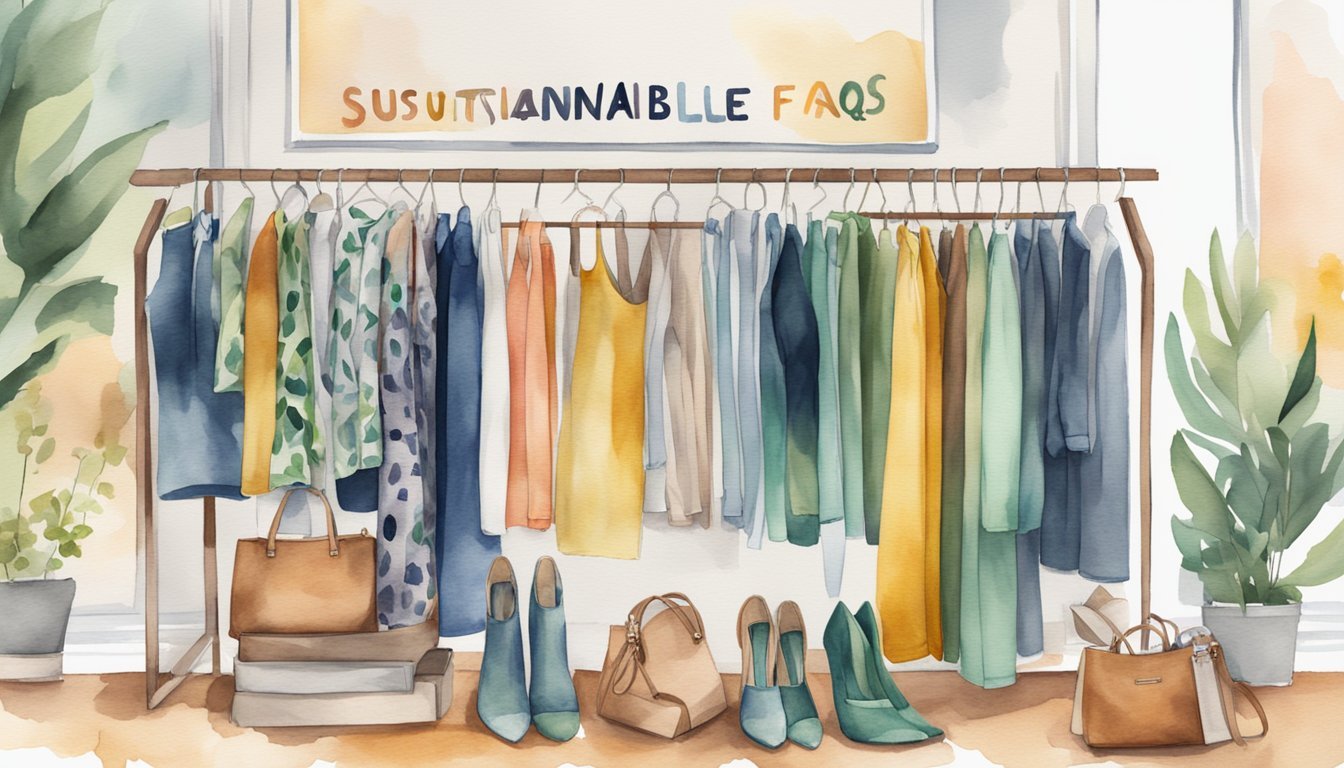
Sustainable fashion reselling can be a great side hustle.
You can make extra money, cut waste, and promote eco-friendly choices by offering pre-loved items a new life.
Where can I resell my fashion items in an eco-friendly way?
You can resell your fashion items on platforms like thredUP, Poshmark, and Depop.
Local thrift stores and consignment shops are also good options.
How do platforms for reselling fashion impact the environment?
Reselling platforms reduce waste by extending the lifetime of clothes.
They help decrease the demand for new clothes, saving resources needed for production.
By participating, you contribute to a circular economy.
What are some key benefits of buying second-hand clothes?
Buying second-hand clothes is cost-effective and it reduces the environmental impact.
You also support sustainable practices and can find unique items that others might not have.
Can reselling clothes actually contribute to a sustainable wardrobe?
Yes, reselling clothes encourages reuse and recycling, lessening the need to buy new items.
This practice helps maintain a sustainable wardrobe and promotes mindful consumption.
What are the trends in the resale fashion market lately?
Trends in the resale fashion market include the growth of online platforms and increased acceptance of second-hand fashion.
Consumers are more attracted to the affordability and eco-friendly benefits of pre-owned clothing.
How do I differentiate between genuine sustainable resell platforms and less eco-conscious ones?
Genuine sustainable resell platforms often emphasize their commitment to eco-friendly practices.
Look for transparency about their processes and how they handle unsold items.
User reviews and company policies can also give you insight into their sustainability efforts.

